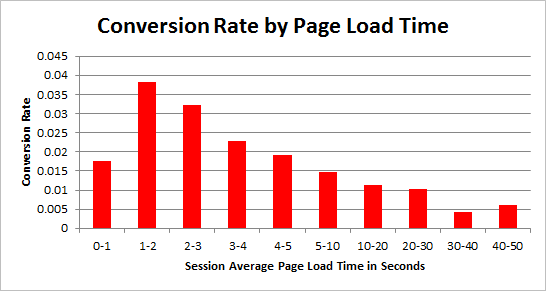estimated one billion websites on the Internet, it can be difficult attempting to break through all the noise out there to get eyeballs on your webpage, product and content.
As a result, one of the most important aspects I’ve had to incorporate into my website – and my clients’ sites – has been perseverance. If you’re willing to work hard, it is possible to get noticed without spending a dime.
Here are a few of the ways I’ve done this over the years:
Content, Content & Content
The old adage of the past several years has been “content is king.”
And although it can be nauseating hearing it repeated so many times, it’s an important concept to understand.
Your content is what defines your website.
The quality of writing is what portrays your website as an authority. The uniqueness of your articles, blog posts and white papers is what separates you from all of the other sites out there on the internet.
So what does good content look like? The following are a few guideposts you can use to gauge your contents’ effectiveness:
Length & Format
In the pioneer days of the online world, all it took was a handful of 100-word articles to earn high rankings with the search engines.
Today, however, it’s a completely different story.
In order to survive the Pandas and the Penguins of the internet, your content needs to be at least 500 to 600 words.
That being said, it’s a good idea to vary the length and format of each piece you create. According to Medium, the perfect length is seven minutes, or, around 1,600 words.

Screenshot via Medium
Instead of always sticking to the bare minimum, attempt to produce content that’s around 1,000 words on one day and 600 words the next day. Then, for good measure, throw in a few 2,500+ word pieces from time to time to really demonstrate your authority.
In addition, try to change up the type of content you produce from time to time. Don’t just write evergreen blog posts – try news-driven blog posts, in-depth lists on industry-related topics and one-on-one interviews as well.
Compelling Headlines
A headline is one of the most important elements of your content. Basic, mundane headlines can only get you so far before audiences get fatigued by the story.
Since 44 percent of Google News readers scan the headlines without clicking on the articles, you have to encourage them to click your story. Remember, even a Pulitzer-quality article can go unnoticed if it isn’t paired with an attention-grabbing headline.
In other words, master the art of headline writing. If you don’t want to, consider this statistic – eight out of ten people will read your headline, but fewer than three in 10 will click on it.
Here are a few tips to help you come up with a clickworthy headline:
- Insert a number into the headline; list posts have a 21 percent higher click-through rate.
- Use question-based headlines for your content. Many websites have built reputations using this method (such as BuzzFeed and Upworthy).
- Case study headlines have proven quite effective, especially for specialized services. Neil Patel grew his sales by 185 percent using this type of headline.
- Take advantage of various headline tools at your disposal:
- Ubersuggest: This tool generates a list of content headlines you can use based on a seed keyword you provide.
- Ntopic: Receive a higher search engine ranking with content that’s statistically relevant. This tool will score your topic to determine if visitors will view your content – if the score is high, you’ll have eyeballs. If it’s low, it’s back to the drawing board.
- Buzzsumo: This website provides you with a long list of past headlines that earned the most social shares on Facebook, Twitter, Google+, Pinterest and LinkedIn. Browse through the list and try to replicate a similar headline to build your own viewership.

Screenshot via Buzzsumo.com
Evergreen vs. News
Evergreen content is content that remains relevant for a long period of time – for example, “How to Use Facebook.” News content, on the other hand, relates to something that recently happened in the world of politics, science, business and so on.
Neither one of these content types is better than the other. Evergreen content is important for driving long-term results, but news-related pieces are great for generating a quick bump in traffic.
But since we’ve already mentioned writing news-related blog post, let’s touch on how important evergreen content can be to a website’s success.
Many bloggers can attest to the effectiveness of evergreen content. For instance, Chris Felden wrote on Moz.com that he saw consistent growth in traffic when he launched an evergreen content initiative.
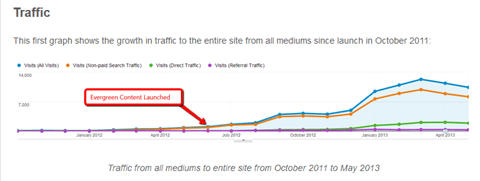
Screenshot via Moz.com
The key is, evergreen content – if produced correctly – creates long-term viewership.
Of course, it’s crucial to regularly update the content, keep your call-to-actions (CTAs) relevant and fresh, and generate new evergreen articles on a regular basis.
One common complaint many people have is that content creators tend to write evergreen articles that the general public has no interest in. Really, it’s all about the topic and how you write it.
Lists, How-Tos & Infographics
These types of content styles work equally well with evergreen content and news-oriented topics. By utilizing these different formats, you can mix up your website without having to write the same kind of article over and over again.
And I know this is anecdotal, but I’ve noticed that, when I mix things up using these formats, my readers value the eclectic nature of my posts and their aesthetic diversity.
Guest-blogging & Outsourcing
GrooveHQ.com turned heads earlier this year when it reported that it had reached one million people through the power of guest posting.
Of course, it isn’t that surprising when you consider that the site generated a number of visitors through posts published on well-trafficked sites like KISSMetrics, Shopify, Buffer and others.
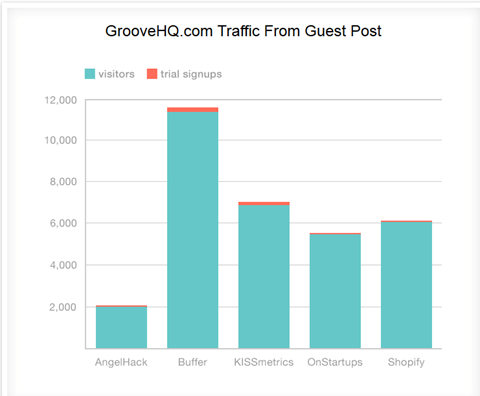
Screenshot via GrooveHQ.com
Just like the long-rumored demise of search engine optimization, guest-blogging isn’t dead – it still remains a popular and effective method for building traffic.
Whether you’re personally guest-blogging or you’re inviting others to guest-blog on your website, doing so will lead to links and attract new readers to your website.
That said, as you’re vetting guest posting opportunities, you’ve got to be careful to only publish high-quality, insightful and authoritative content, as well as to only share your content on sites that maintain similarly high standards.
Consider the following rules for being a respectful guest-blog poster:
- Link to the post from your blog to help it gain visibility.
- Promote and share it on your social profiles.
- Thank the publisher for allowing you to post.
- Hang around the website and respond to comments.
Interviews
If you want to really stand out, include an interview in your article. Doing so may seem overwhelming and time-consuming, but the end result is totally worthwhile.
Recording an interview can add more meat to your content and give your website more credibility. Also, when you publish the interview on your blog, it will likely prompt the source to share it around as well with his or her colleagues – expanding the reach of your writing even further.
Test. Test. This is a Test.
Great websites don’t happen by accident. Instead, they’re the result of hard work that works out all the kinks well in advance.
Instead of having your readers suffer through 10-second delays, faulty Flash plug-ins or an outdated comments section, your website should be up-to-date and effective.
Not only do these errors hurt your relationship with your visitors, they can also impact your search rankings. And with that in mind, one of the best things you can do to make your visitors happy is to undergo a complete internal testing process.
Here’s everything you need to watch out for:
A Responsive Website
Gone are the days of visitors using only their desktop computers to browse your website.
Today, Internet users are surfing the web with their smartphones, tablets, phablets and laptops. This means that your website must be responsive to these types of mobile browsers.
If not, visitors will be upset and seek assistance elsewhere, and Google will further penalize you. If your website is mobile-friendly, you’ll be rewarded by the search engine giant.
If you aren’t sure whether or not your website meets these standards, conduct tests to determine if your website can be viewed across a wide range of devices and screens – or hire somebody to check this for you.
Speed it Up
According to Tagman (via Website Magazine), a tracking system provider, every one second delay causes a seven percent loss in conversions.
Furthermore, Jacob Nielsen wrote in “Usability Engineering,” that there are three important time limits every website should consider when it comes to attracting and retaining visitors:
- 0.1 Second. If the website responds instantly, users don’t feel in control anymore and believes they’re being manipulated.
- 1 Second. Users will notice the slight delay, but maintain their train of thought and then continue browsing. Experts say this is the right amount of time for a webpage to load.
- 10 Seconds: At this point, users will clearly notice the delay, feel they’re not in control and will exit the website.
An Immaculate Design
As most of us know by now, the design of your website is crucial. What this really means is that visitors have to understand what your website is all about – and they should never feel annoyed by its design.
In other words, autoplay videos, pop-up advertisements, irrelevant ad copy and stock photos should be elements to avoid in most cases if you wish to keep your visitors happy.
And really, it’s 2015. There’s virtually no need to include these frustrating elements anymore!
When it comes to photos, stay away from stock. First, they’ve been around a long time, which means that a lot of other websites use these pictures already.
Second, they can make a website look rudimentary, disorganized and perhaps even sloppy.
Third, they just flat out turn off readers.
The Neilsen Norman Group writes that websites should take into account these image facts:
- Photos should be of real people.
- Photos should contain product details.
- Large photos (when requested) are beneficial.
- Information-carrying photos are good for the website.
The group came to this conclusion by studying the results of website images. In one instance, it looked at web pages that contained a large number of biographies and their related photos.
The group concluded that visitors spent 10 percent more time looking at bio pics than actually reading the biographies themselves!
Simply put: readers pay attention to real images of real people – not generic stock photos.
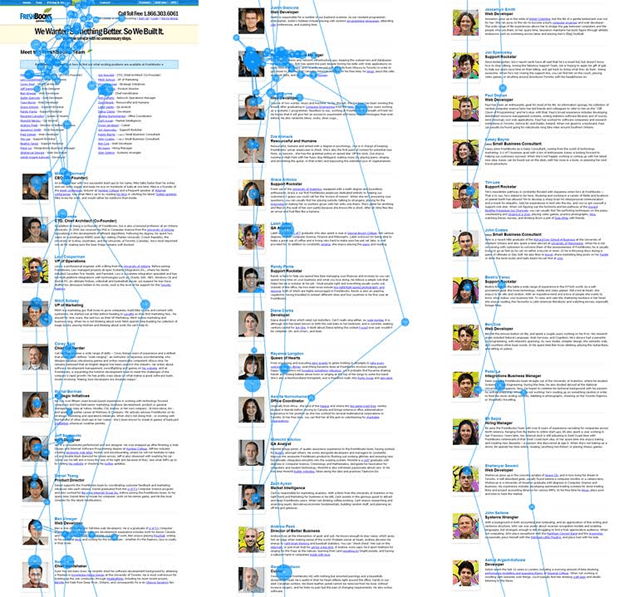
Screenshot via NN Group
A Full-Blown Marketing & Social Media Campaign
Nearly half of all small- and medium-sized businesses (SMBs) do not participate on social media. Can you believe it?
This could be their downfall.
If you still think that your website doesn’t need social media, you may as well close up shop right now.
Although many can sympathize with the idea that it can be nearly impossible for a small brand to be found on Facebook, Twitter or Pinterest in today’s social network landscape, the fact is social media has become a permanent realm of the Internet
That’s why every business, website and blog needs to be other there, Liking, sharing and interacting on the major social media outlets that are appropriate for their audiences.
At the same time, though, social media shouldn’t be your only marketing tactic. Instead, every website needs implement an array of marketing methods to gain traction, momentum and eyeballs.
Without a detailed social media and general marketing plan that incorporates the following strategies, there’s no way your site is going to get noticed online.
Start Posting on LinkedIn
It’s easy to think of LinkedIn as just a social network used to find work, connect with other professionals and show off your credentials. But you may not know that posting content to the site’s publishing platform on a weekly basis can seriously improve your website traffic.
Publishing articles on LinkedIn shows off your authority in your industry and creates clicks to your website. It also allows you to engage with other professionals in your field – perhaps even prompting some companies to want your opinion on important matters.
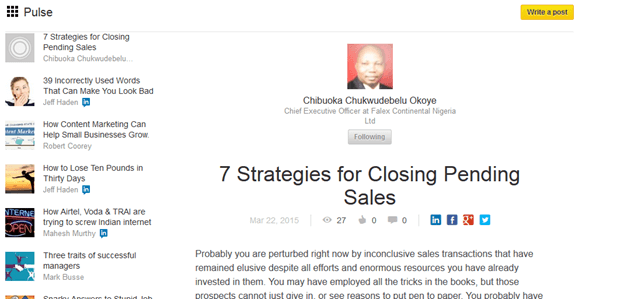
Screenshot via LinkedIn
Here are a few tips for publishing effectively on LinkedIn:
- Publish articles early in the week. Research by Social Media Examiner has shown that Tuesday is the best day to submit content, while Saturday is the worst.
- Select popular and relevant channels. Moving forward, pick a specific niche and write compelling content surrounding that subject.
- Encourage readers to engage in the article. Ask them to share their own expertise, write about their personal experiences and ask relevant questions to increase overall engagement.
- Write an optimized and compelling headline. Yup, just like with your blog posts, your headlines matter when it comes to LinkedIn posts. Put the same amount of effort into optimizing these that you do in your usual articles.
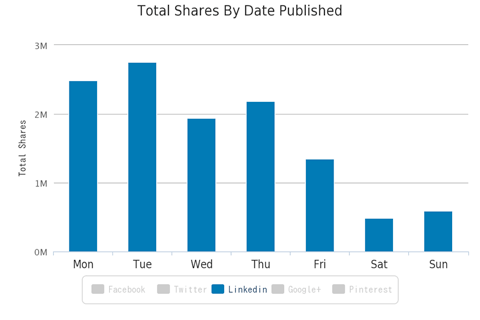
Screenshot via Social Media Examiner
Email Marketing
Email marketing isn’t exactly new. But lately, websites attempting to gain new customers and followers have put more of their attention on content marketing and social media marketing at the expense of this traditional form of internet marketing.
If you have as well, it’s time to get back down to business.
Email marketing is making a comeback – especially in relation to the rising prominence of mobile marketing. Keep in mind also that millennials – individuals between ages 18 and 34 – actually tend to prefer email marketing over any other type of campaign.
With 67% of United States millennials using their smartphones to check email and another 10% performing transactions directly through their mobile devices, email marketing is truly an effective medium.
“Millennials are super connected, savvy shoppers. You have to expect that your message will be sitting next to one (or more) of your direct competitors,” said Seamas Egan, corporate sales manager for Campaigner, in an interview with Clickz.com.
Here are five ways to leverage the power of email marketing (these also relate to blog posting in general):
- Offer a mention of thanks to every single customer or subscriber.
- Express a clear call-to-action (such as, “Sign up for our newsletter” or “Subscribe to our monthly deals list”) so that customers understand what to expect from you.
- Send a feedback email to determine if your subscribers are satisfied or not.
- Use a “P.S.” line that includes your website, address, social profiles or other relevant information.
- Shoot out exclusive deals for current customers and use referral programs to drive new leads.
Commenting in Comments Sections
To show off your authority in your field, make it a point to participate in active comments sections in your field, whether through newspaper websites, blogs or institutions.
Of course, you shouldn’t just add a link to your website and leave. Instead, provide a thought-provoking response to the written article or share your contradictory view on the issue at hand.
In addition, reply to those who speak directly with you. At the end of each comment (or every three to five), include a link to your webpage to show fellow commenters where they can learn more about you and your work.
Be Social on Social Media
One major problem that prevents a lot of bloggers, brands or entrepreneurs from generating traffic is that they tend to ignore the “social” part of social media.
Basically, they don’t share interesting content, they don’t respond to inquiries, they ignore their audience and they refuse to update their accounts.
Winning companies know better. A strong majority of corporations are regularly active on Facebook and Twitter because they understand the important role these networks play in their overall corporate strategy and marketing plan.
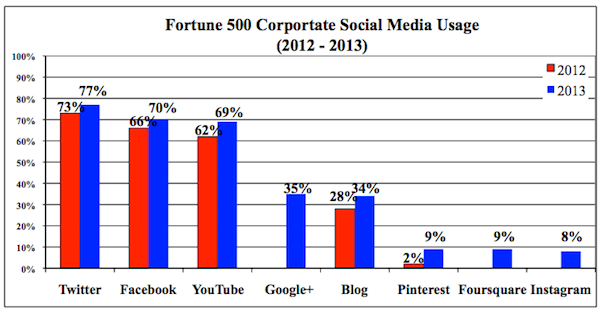
Screenshot via Search Engine Watch
Engage with Your Audience
I know – you’ve got a lot on your plate. Maintaining a website, producing content, and managing all the other activities of your daily life definitely get in the way of engaging with your website’s audience.
But really, engaging with your audience should be just as much of a business plan as writing articles and performing data analytics – maybe even more.
Studies have regularly shown that visitors want to be engaged with and not talked at, such as human being vs. automation. Experts agree that website engagement is the newest marketing tool around and a must-have for any website or brand.
So what’s stopping you from making time for this important activity?
If it’s truly a time crunch at work, consider the following three simple, but clever, ways to actively engage with your readers and overall audience:
Host Contests
From the famous Ice Bucket Challenge to popular photo caption contests, hosting a contest can certainly improve traffic, generate new leads and create publicity.
In 2012, for instance, The Roanoke Times held a Mother’s Day Photo Contest sponsored by the local Kroger grocery store. With just $1,500 worth of prizes to be won, the newspaper received “303 submissions to the contest, more than 28,000 votes, and nearly 230,000 pageviews.”
Talk about a success!
Here are five contests that all websites should be running from time to time, just to get you started:
- Photo contests
- Writing contests
- Video contests
- Naming contests
- Challenge contests
Create a Community Forum or Comments Section
If your website specializes in a specific industry, then what better way to grow and engage with your audience than by launching a community forum?
This can be a place where ideas are shared, questions are asked, problems are solved and conversations are held. Of course, if you go this route, you’ll need a community moderator who can speak with users, enforce rules and help direct visitors to appropriate resources.
If that sounds like too much of a hassle, a robust comments section is another great way to create long-term and recurring readers.
Comments sections can be built through Facebook or Disqus, but it’s a good idea to maintain a set of minimum standards to ensure a proper decorum.
Although the trend as of late has been for news websites to eliminate the comments section and blogs focusing exclusively on social media comments, it’s still helpful to include comments sections on your website from an engagement perspective. Just be sure you’re clear about your standards and willing to enforce them.
Feature a Monthly Webinar
Everybody wants to learn. So whether you’re an expert on social media, history or cooking, why not host and feature a monthly webinar?
Not only does this allow you to engage and speak with your audience directly, it can also bring in additional traffic – websites that host webinars maintain a 51 percent registration conversion rate.
Of course, you’ll have to actively promote your event on social media and on your website to attract attendees. It’s also a good idea to post a follow-up video, as well as the webinar itself – just in case the audience missed it.
Take the following four steps to get started with regular webinars:
- Select a topic and (once again) choose an optimized headline to help your site gain traction in the search rankings.
- Design a landing page specifically created for your webinar.
- Record a one-minute video showing viewers what they’ll learn from the webinar.
- Review your webinar interaction, record it and present your content.
The bottom line is this: you don’t have to sell the family farm in order to have a successful website.
Yes, it takes some effort, a few different tactics and some consistent effort to generate a steady stream of traffic. But if you’re willing to invest the time, you can have all the perks of a well-trafficked site without spending an astronomical sum on ads.
As long you stay persistent and try your hardest, your website can become reputable, triumphant and lucrative.
Now, I want to hear from you. Have you used any of these tactics to build a following? Which of them have worked out best for you? Share your thoughts by leaving a comment below!]]>



